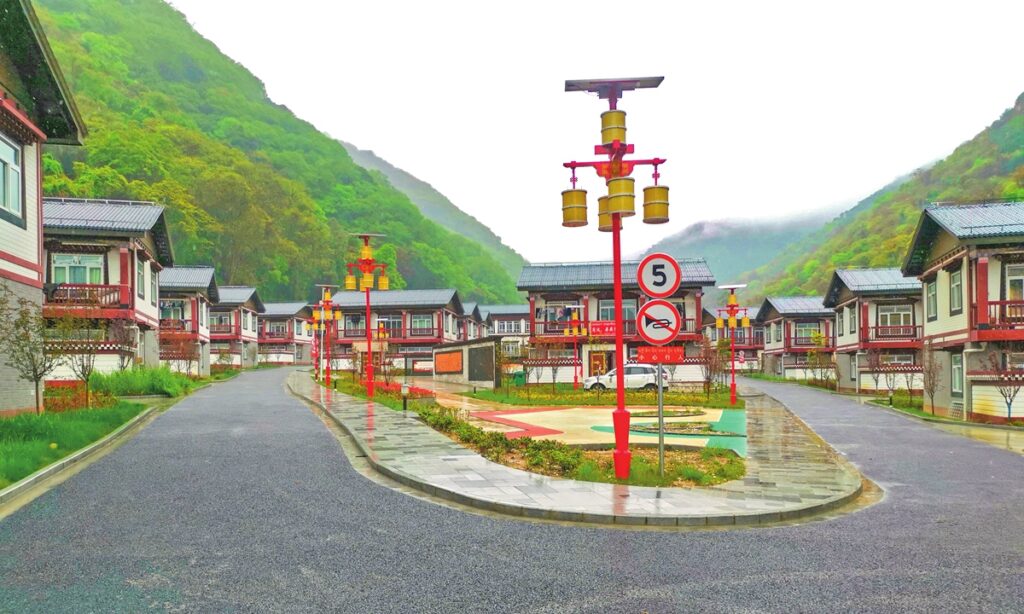In the border regions of Southwest China’s Xizang Autonomous Region, newly-built and consistently-developing comparatively well-off villages have become an essential and effective part of border defense.
The Global Times reporters recently visited some of these villages near the front of border regions. They found that the policies to revitalize villages and settle down relocated residents have allowed villagers to move into new and comfortable houses, learn new skills, and find new job opportunities.
The comfortable life of the border residents in Xizang refuted slanderous attacks from foreign forces, especially those from Indian media, some of which in late September accused China’s project that has helped build hundreds of comparatively well-off border villages of possessing “doubtable aims.”
What they could not understand is that as the frontline to defend border security, villagers at these regions have been deeply rooted there to guard the homeland and create their own happy future.
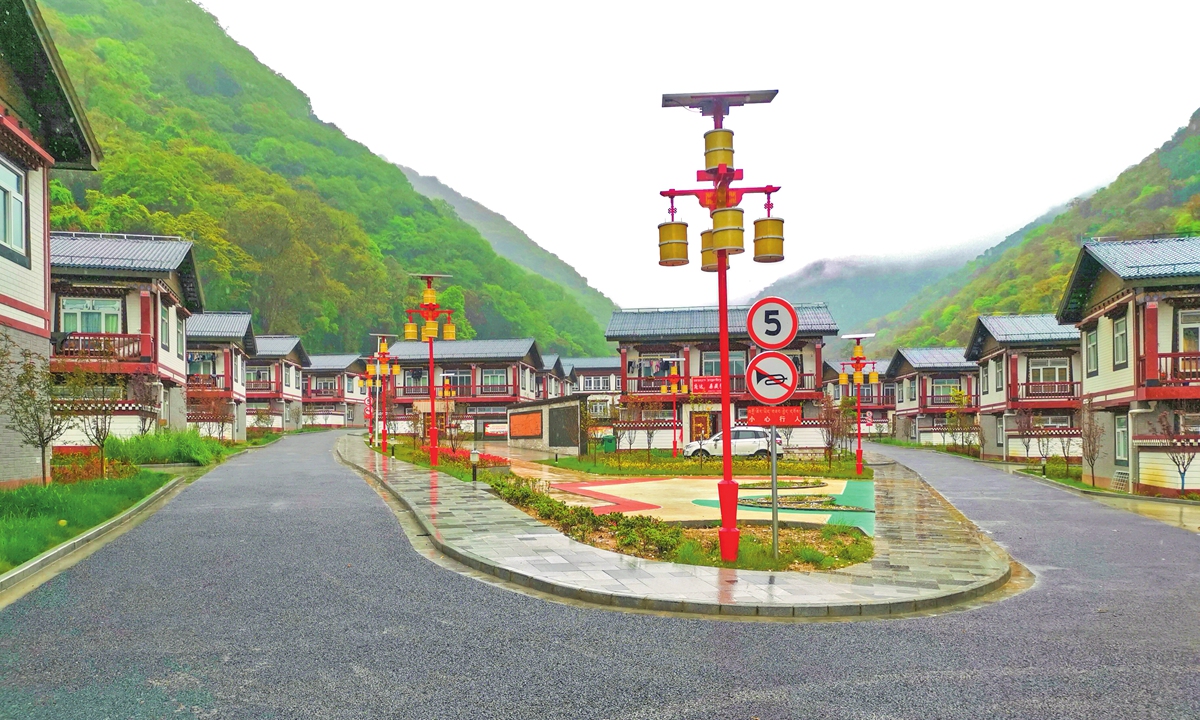
The well-off model village in Xiayadong town in Yadong county, Xizang Photo: Courtesy of Lin Lichao
Model home
Walking into the comparatively well-off model border village in Xiayadong town in Yadong county, Xizang, which borders Bhutan and India, one would be surprised by its cleanness and orderliness.
The village is surrounded by green mountains. Along the tidy asphalt road are staggered two-floor Tibetan-style houses, each proudly displaying a Chinese national flag on the roof.
The village is fully covered and connected with utilities such as tap water, electricity, roads, and the internet. It’s also fitted with its own facilities such as a square for activities, gym, a police station, kindergartens, a supermarket, and plastic runways.
Inside the houses is combination of modern and traditional Xizang styles – household appliances such as televisions and refrigerators are arranged along with traditional furniture, while in front of the houses, children play with each other.
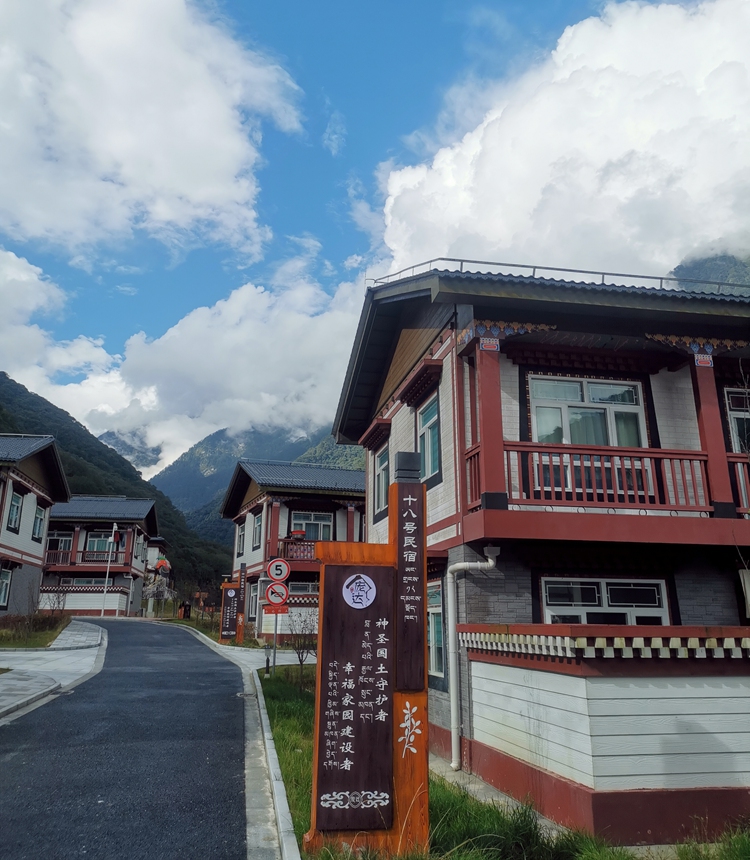
The well-off model village in Xiayadong town in Yadong county, Xizang Photo: Courtesy of Lin Lichao
Lin Lichao, the first Party secretary of the village, told the Global Times that 27 households moved into this village, 2,100 meters above sea level on September 20, 2020 from a village 130 kilometers away, which stood at an altitude of 4,630 meters.
“There are 28 houses for residents in our village, each measuring 183 square meters. It only took nine months to complete construction of all these buildings,” Lin told the Global Times.
The place where the villagers previously lived had a harsh environment. Before they moved to Xiayadong, they could only make a living by herding. Therefore, after hearing about the relocation policy, many residents volunteered to join the plan.
At their new home, with the support of the local government and the advantages of resources and a border location, villagers have been developing industries such as salmon farming and greenhouse vegetable cultivation. By cultivating vegetables in 62 greenhouses, the village made a profit of 300,000 yuan ($46,000) in six months, according to Lin.
“Thus, the villagers not only learned new skills, but also increased their incomes,” Lin said. “Their grassland in hometown is not abandoned. Some of the villagers would still drive back to herd sheep and yaks.”
Today, the villagers are also developing tourism. Some villagers have vacated certain rooms in their homes to transform them into homestays. A small-scale trial operation has already begun, Lin introduced.
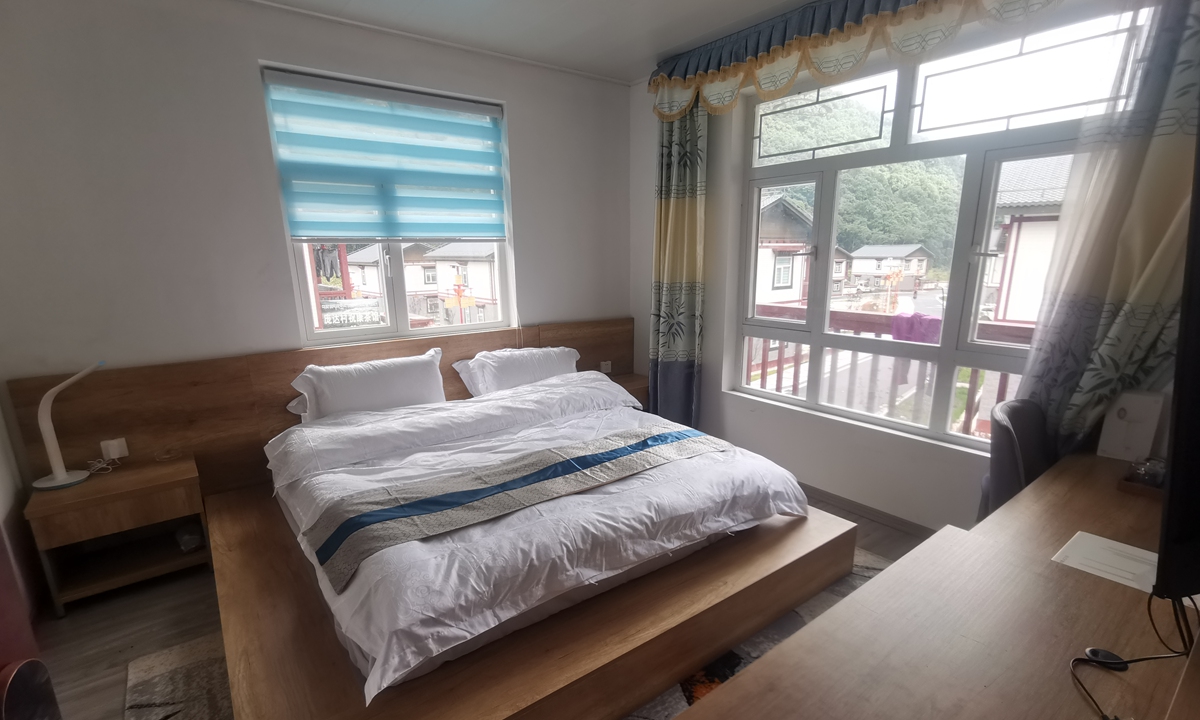
A homestay room in the well-off model village at Xiayadong town Photo: Courtesy of Lin Lichao
Villagers also enjoy a border subsidy of 12,000 yuan per adult per year. Lin elaborated that through various forms of industrial development, the per capita income of villagers had reached 19,000 yuan at the end of last year.
Tashi Puci, a villager at the well-off model village in Xiayadong town, also serves as a border patrolman. He has a strong sense of patriotism. He often says, “We enjoy our good life thanks to the Party and the country. Each of us is part of the motherland and has the obligation and responsibility to guard the country.”
The well-off model village in Xiayadong town is just a microcosm of the rural revitalization of Yadong county as well as the entire border region in Xizang.
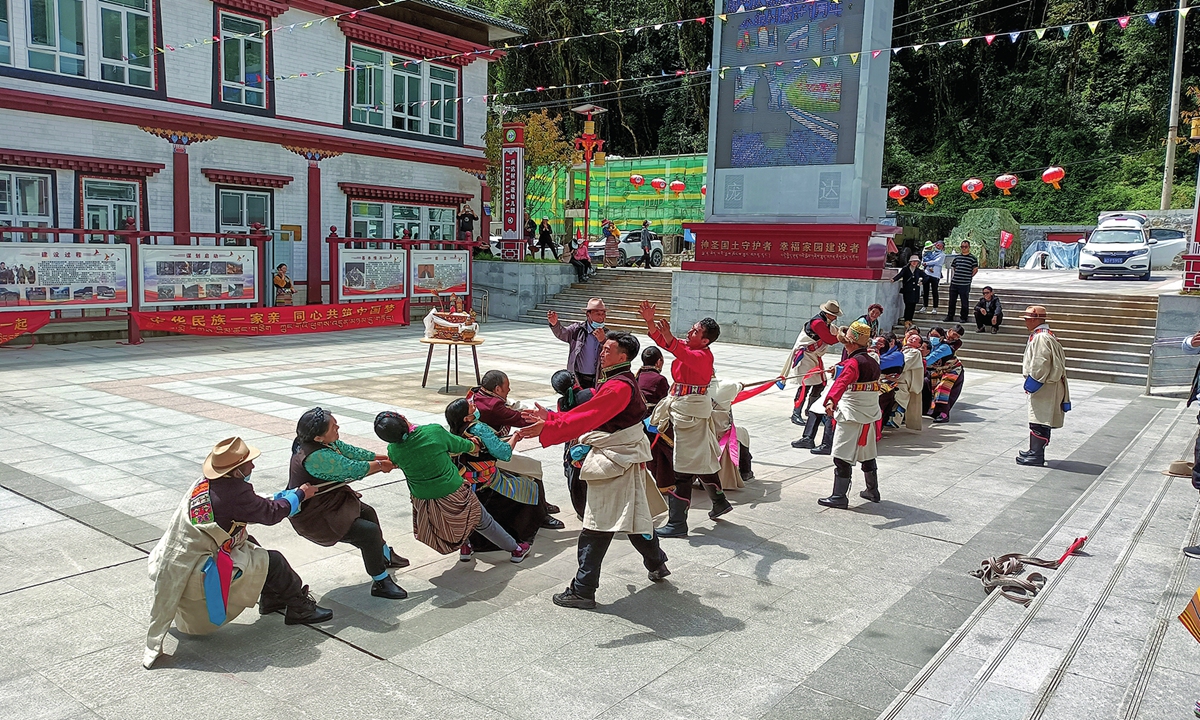
Villagers at the well-off model village at Xiayadong town hold activities to celebrate the first anniversary of the move-in. Photo: Courtesy of Lin Lichao
When visiting the well-off villages in the border regions, the Global Times reporters found that the newly-built rural villages usually have unified Tibetan houses, neat streets together with kindergartens, fitness equipment, and other supporting facilities.
In a well-off village at an altitude of 4800 meters, the newly relocated residents live in new, well-appointed houses with exquisite and gorgeous Tibetan decoration. The room is not only spacious and warm, but bedrooms are also fitted with an oxygen supply system.
In recent years, Xizang has been vigorously implementing the construction of well-off villages in border areas. The main construction contents include housing improvement, infrastructure, public service facilities, industrial construction, and ecological and human settlements.
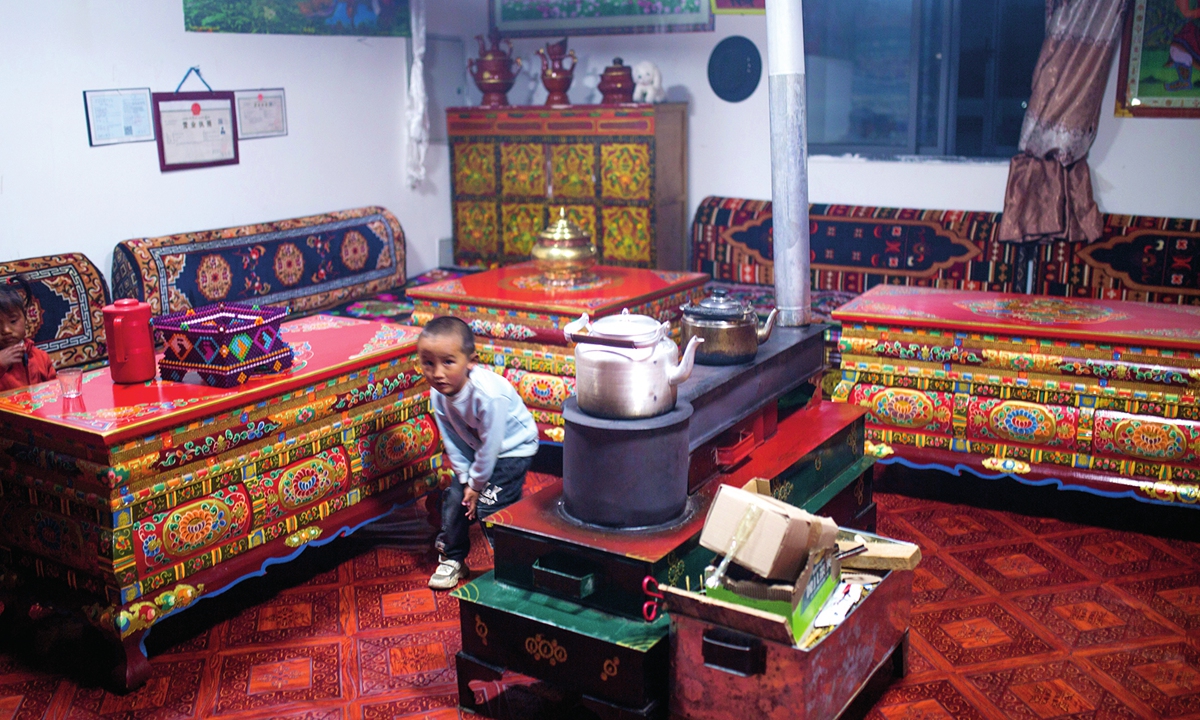
A resident’s living room at a home in a well-off village in the Xizang border region Photo: Shan Jie/GT
By the end of 2020, Tibet had built more than 600 well-off, high-standard border villages. The roads connecting border villages are also quite accessible. At least 130 border roads have been newly built or reconstructed with a total length of 3,080 kilometers, the Xinhua News Agency reported.
The main power grid is extended to all border towns, as well as postal services, mobile communication networks, and safe drinking water. The living standards of border residents have improved significantly.
Defending the frontline
The border region in Xizang is not only the key region for rural development and revitalization, but also the frontier to guard the country’s territory. Every resident there deeply knows their duty in safeguarding border security, and many of them are contributing to this cause.
Medog county, sitting in the Yarlung Zangbo River valley in southeastern Xizang, is one of the most inaccessible places in China.
From the county town driving southwest for about one hour, one could arrive at the Gelin village, 1,721 meters above sea level, nestled in the primeval forests. A village of the Monba people, Gelin not only enjoys a beautiful scenery of Mount Namcha Barwa, but is also famous for its strategic value as a border “outpost.”
Gelin village has a long history of defending the territory and villagers have strong willingness to safeguard the border.
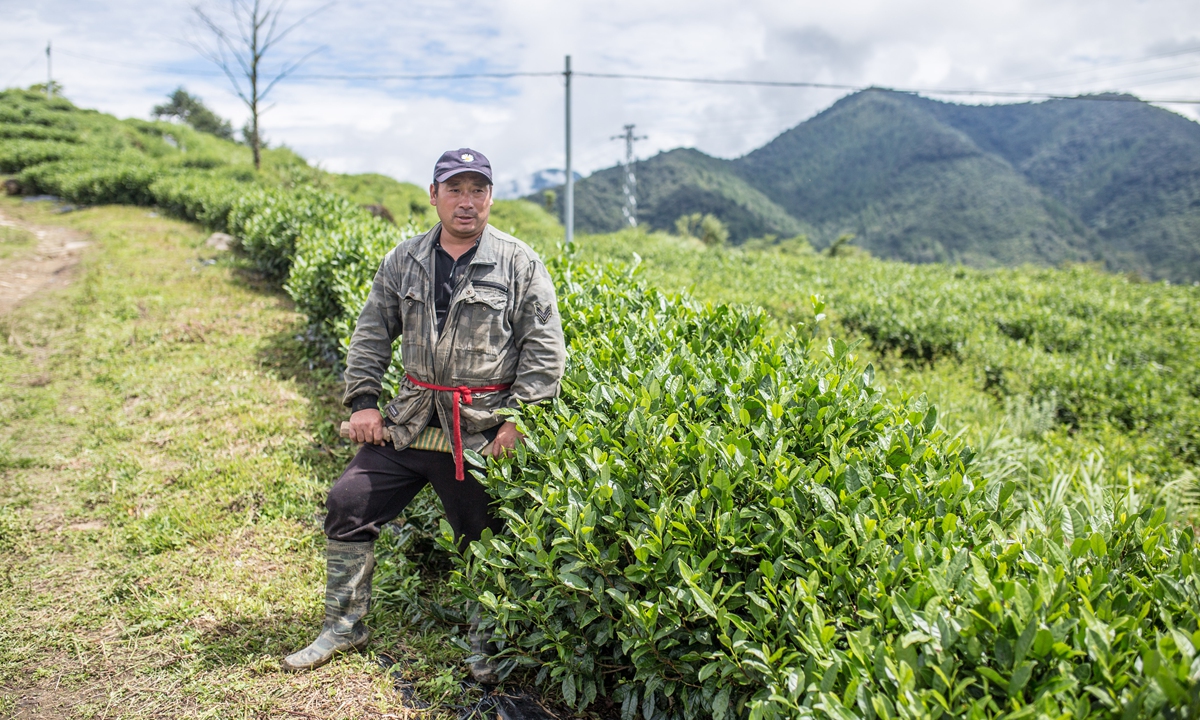
Sangye Dawa, a Gelin villager and a veteran in border patrol, holds his Monba knife and poses in the village’s the tea garden. Photo: Shan Jie/GT
Dorje Phuntsok, director at the villager committee, told the Global Times that the Monba people used to be hunters. In the past, villagers would often enter the mountains with shotguns. “At that time, people from neighboring countries dared not come to our places.”
“Now we do not need to seek a living in the forest, but we have never given up defending it,” he said.
Huang Jiabin, Party secretary of Gelin village, said that young men and the border defense troops in the village regularly form border patrol teams. Every month they carry out two to three patrols, which could last from three days to 10 days.
In the village, every family hangs a national flag outside. They also have some extra flags which they usually bring along with them when patrolling in the mountains and place them at key spots when necessary to claim the territory.
Dorje Phuntsok said that it has advantages to have villagers participating in border patrols. “The villagers are more familiar with the routes and conditions in the forests. During patrols, they could serve as guides, carrying supplies and sharing their experience and skills of living in the wild with the soldiers.”
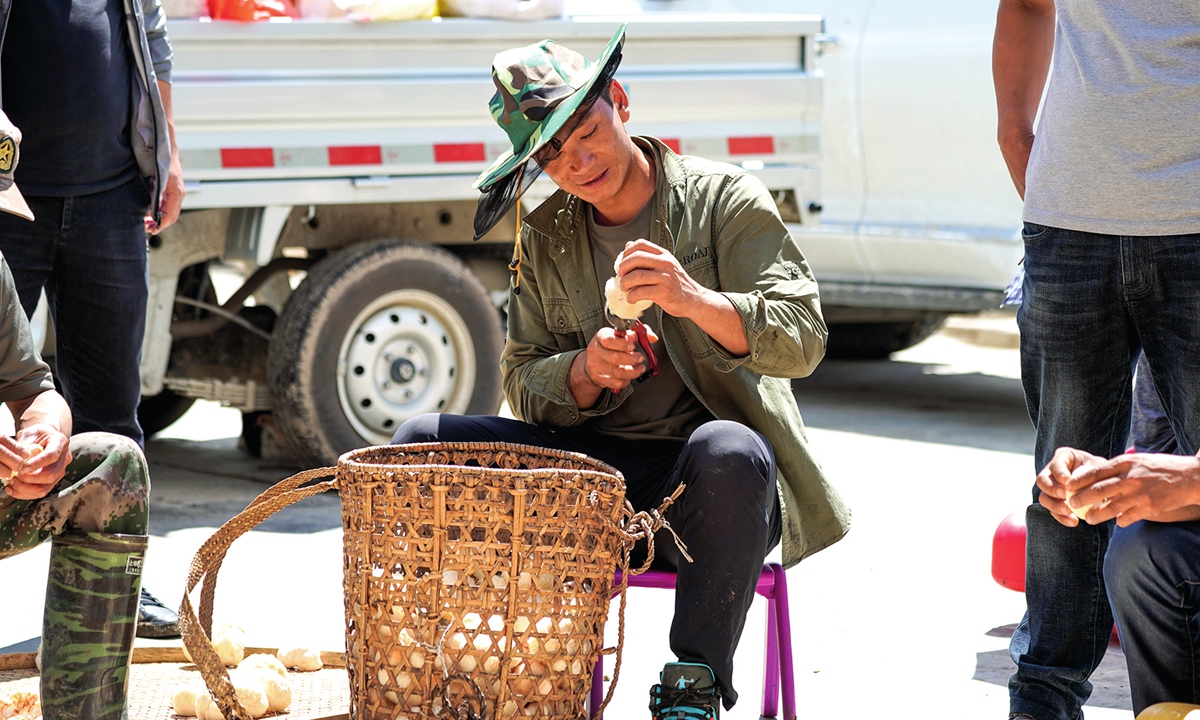
Dorje Phuntsok inspects newly-harvested monkey head mushrooms Photo: Fan Wei/GT
Meanwhile, border defense troops near the village have also involved themselves in activities that could increase the income of the villagers.
Huang believes that such activities improved villagers’ livelihoods. Under the help of local border defense troops, Gelin village has now formed an industrial layout consisting of tea, red rice, glossy ganoderma and honey cultivation.
“The border defense soldiers and officers not only guide us to learn about laws and policies regarding border regions, but also teach us techniques in developing agricultural and sideline products,” Huang said.
Under such a model, the Gelin villagers, who lived a slash-and-burn cultivation existence before the peaceful liberation of Xizang in 1951, have all shaken off poverty. In 2020, the average annual income was 12,530.77 yuan, making the Gelin a renowned, comparatively well-off village in the border regions.

